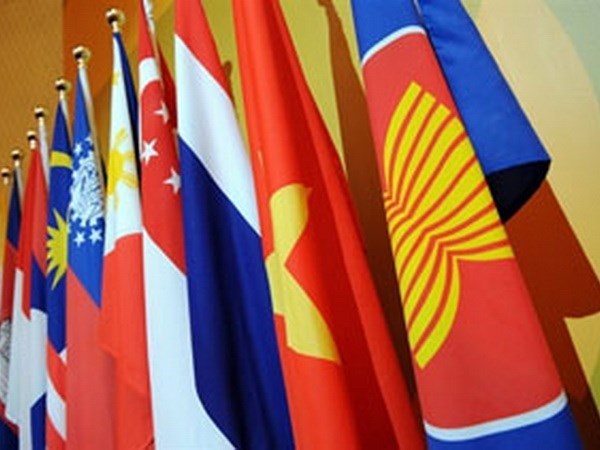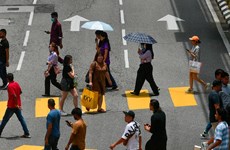More needs to be done towards AEC’s prosperity: Credit Suisse
More work needs to be done to ensure that the ASEAN Economic Community integration will actually bring about a stronger and more prosperous region, a senior financial institution official said.
 The ASEAN flag (R) and the flags of the bloc's member nations (Photo: AFP)
The ASEAN flag (R) and the flags of the bloc's member nations (Photo: AFP)More work needs to be done to ensure that the ASEAN Economic Community (AEC) integration that commences this year will actually bring about a stronger and more prosperous region, the Philippines’ Manila Times quoted a senior financial institution official.
At the Manila Times 2nd Business Forum on July 22, Jose Isidro Camacho, Credit Suisse Vice Chairman for Asia Pacific division, said that the real integration among ASEAN member nations has yet to fully materialise despite the long list of agreements reached since the bloc’s establishment in 1967.
He stressed that in spite of the removal of tariffs on almost all goods within the region, more work is needed on trade facilitation, uniform customs procedures and removal of non-tariff measures to truly realise a seamless production base.
He noted the integration should include elimination of visa requirements for inter-ASEAN travel to encourage greater interaction, understanding and awareness as tourism and investments are boosted, just like what is observed within the European Union.
In terms of goods, Camacho reiterated that the region is “almost there” with zero tariffs in almost all goods, although work still needs to be done on the non-tariff issues.
On services, he said there has been “very little progress” in the vision to provide services in air transport, healthcare, tourism and logistics.
There has been no progress as well in investments, and it may have even regressed in some economies, Camacho said, adding that not much has been accomplished on the capital side to have a more integrated capital market for the region.
As for skilled labor, Camacho said: “Given the various stages of economic development and different levels of education amongst ASEAN members, an expedited flow of skilled labor would have been helpful in deploying excess skills from one ASEAN economy to another. But instead, in recent times, we have seen even more restrictions on foreign labor in some of the ASEAN countries.”
But all of these problems may be addressed by starting with issuing an ASEAN visa to facilitate travel within the region for non-ASEAN individuals, as well as adopting the concept of ASEAN citizenship.
He said the issuance of an ASEAN visa will link trade, tourism and investments across all member countries, while accepting ASEAN citizenship can bring closer the economic proximity of each ASEAN member.
In the next few years, Camacho believes that ASEAN will continue its economic growth momentum due to a number of megatrends that are unlikely to reverse, including the fast pace of urbanisation within member countries, an improving ASEAN consumer base, the amount of infrastructure to be built, the rise of high net worth individuals in the region, ASEAN having rich resources which makes it a major supplier of commodities, and the emergence of ASEAN multinationals and brands.
The Association of Southeast Asian Nation (ASEAN) is an economic region with a 600 million population, generating a combined gross domestic product of about 2.4 trillion USD, which is 5.5 percent of the world GDP. In the last five years, the region has been growing by 5.6 percent annually.-VNA













